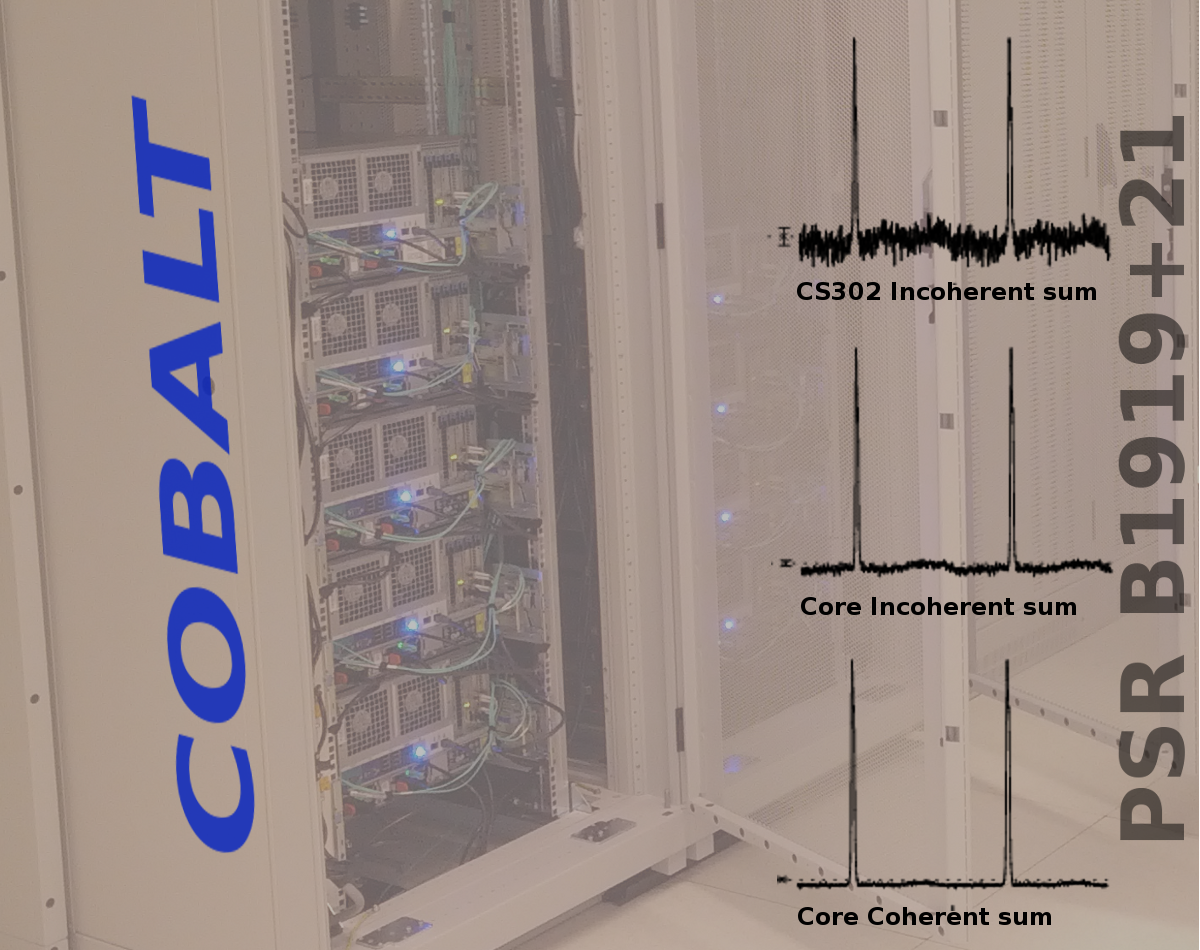Daily Image
14-02-2014Cobalt sees a Pulsar
| Submitter: | Michiel Brentjens |
| Description: | As of the end of March, the loyal IBM BlueGene/P will no longer be LOFAR's digital back-end. It will be replaced by Cobalt, a cluster of 8 PCs (background image) with four NVIDIA graphics processors (GPUs) each. Although the correlator application of Cobalt approaches production readiness, the beamformer application started testing only very recently. On Thursday Feb 6, after an intense couple of days of systematic debugging by a team spanning R&D, the Radio Observatory, and the Astronomy Group, Cobalt produced its first pulsar detection. We used 5 minutes of 20 sub-bands of prerecorded data from LOFAR core station CS302, taken on December 2013. COBALT produced beamformed data with 16 channels per sub-band, at a time resolution of 1.3 ms. The top graph shows the signal of the pulsar formerly known as LGM-1, after adding the two HBA "ears" CS302HBA0 and CS302HBA1 incoherently. Emboldened by this success, we tried incoherently adding the signals from all stations of the LOFAR core (except CS013), which led to the middle graph. It has a much improved signal-to-noise ratio, demonstrating that incoherent addition works. The last graph shows coherent addition. Initially, this led to a signal-to-noise ratio of infinity/0, but that was fortunately quickly solved. So on Friday Feb 7, we detected the pulsar with the full sensitivity of the coherent LOFAR core! Background picture by Chris Broekema, pulsar analysis by Vlad Kondratiev. |
| Copyright: | (c) Astron 2014 |
| Tweet |  |
